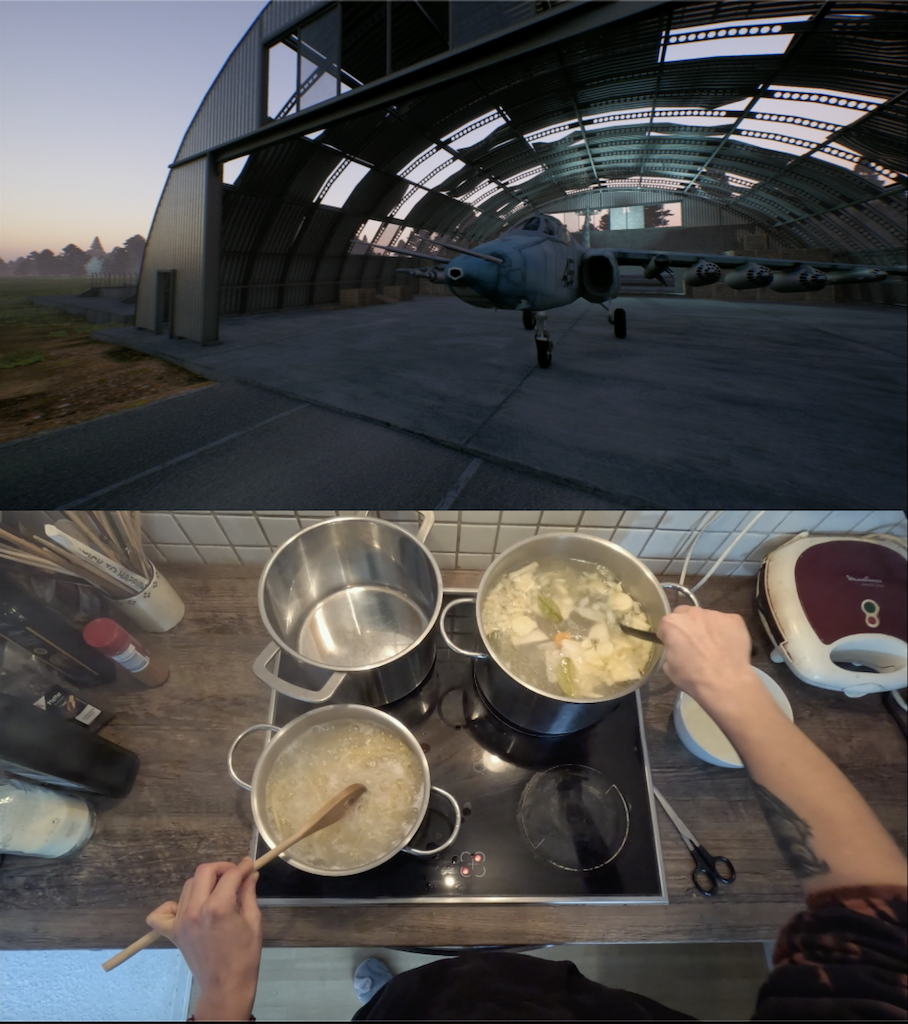
(b. Stolin, Belarus, 1997) is an artist and filmmaker. They received their BFA from European Humanity University (Vilnius, Lithuania) and is currently pursuing a MFA from Academy of Media Arts Cologne, Germany. tania licheuskaya is the recipient of several grants and awards, including the DAAD Prize for outstanding oforeign student; Rosa-Luxemburg Postgraduate Stipendium. Their works have been featured in exhibitions such as Weltkunstzimmer, Düsseldorf, Germany; Westwerk, Cologne, Germany; Skulpturenmuseum Marl, Marl, Germany among others.
.jpg)
email: tanyarfnz1@gmail.com
Čornaja poliŭka
Digital film, 21′ 14″, 2024
Digital film, 21′ 14″, 2024
He breaks into your home without knocking, he is hungry and hopes you will feed him. He has always been hungry, and he likes to expand the boundaries of his appetite. This hunger has a dark history of liberation wars, peacekeeping and anti-terrorist operations. Evoked by imperial fantasies, the appetite extends to the territory of your home, the guest is already here. A friend from my hometown once posted a story on Instagram. I saw a warplane there. War? Not immediately, but after a while, I remembered that there is a military airfield in Luninets, the existence of which I had successfully managed to forget. Until 2022, when it was reactivated as a result of the start of Russia's full-scale war against Ukraine. The Luninets airfield is located 40 km from the border with Ukraine. At the initial stage of the full-scale war, it was actively used for attacks on Ukrainian territory: missiles were launched and Russian airplanes made sorties from there. Čornaja poliŭka is soup that I offer to an uninvited guest — a dish of traditional Belarusian cuisine, made of goose or pig blood. It is a polite way for a young woman's parents to reject a young man's marriage proposal. By offering this dish to my guest, I refuse to accept him in my home.
 (Click on image for more...)
(Click on image for more...)

Belonging to uncertainty
Linen, baking paper, text, embroidery w/ Anna Karaneuskaya. 2023
Linen, baking paper, text, embroidery w/ Anna Karaneuskaya. 2023
In order to overcome homesickness, you should wear a clean apron and proceed to kneed the dough with bright thoughts in mind.
Make yourself comfortable: take your time and warm up the milk. Put it in a larger context. Add yeast, a cup of your personal stories and three times as much of collective histories. Mix it throughly.
Set aside what you’ve already heard or know, let another form rise. While the form is rising, think about a unique blend of experiences. Learn to listen and respect friends or strangers. Listen carefully.
After the form has risen and begins to settle, beat in the question. Or ask yourself ‘where do milk, yeast, sugar, flour come from?’ Revisit your history. After, add butter, honey, sour cream, remaining flour, egg whites and a pinch of salt. Don’t stop questioning where the ingredients come from. Knead them with memories and fears. Blend them with desire. Cover the form with hope and let it rise in its fluidity.
Preheat the oven, round the form and, while waiting, think of planetary contexts of powers.
Invite yourself to reconsider your beliefs, ask yourself: Where do I come from? While the oven is heating up, work with the remaining dough: make new symbols, meanings, fantasies, utopias, political and material realities. Repeat the process several times!
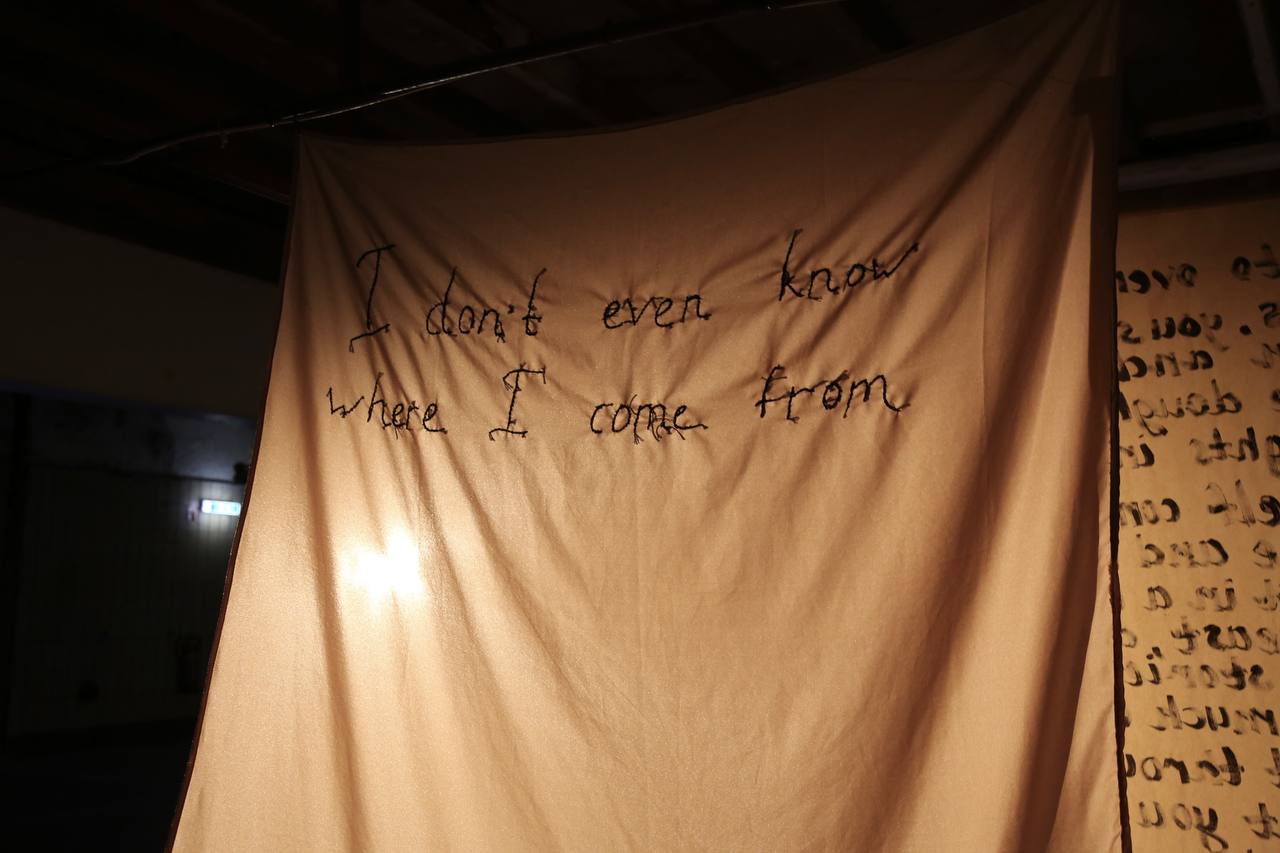 (Click on image for more...)
(Click on image for more...)
Set aside what you’ve already heard or know, let another form rise. While the form is rising, think about a unique blend of experiences. Learn to listen and respect friends or strangers. Listen carefully.
After the form has risen and begins to settle, beat in the question. Or ask yourself ‘where do milk, yeast, sugar, flour come from?’ Revisit your history. After, add butter, honey, sour cream, remaining flour, egg whites and a pinch of salt. Don’t stop questioning where the ingredients come from. Knead them with memories and fears. Blend them with desire. Cover the form with hope and let it rise in its fluidity.
Preheat the oven, round the form and, while waiting, think of planetary contexts of powers.
Invite yourself to reconsider your beliefs, ask yourself: Where do I come from? While the oven is heating up, work with the remaining dough: make new symbols, meanings, fantasies, utopias, political and material realities. Repeat the process several times!

when ‘familiar’ does not work, what is left behind?
Installation. Clay, wood coal, sound, memories. 2023
Installation. Clay, wood coal, sound, memories. 2023
“A human was born to work on the field”, says my grandmother, who has been living her entire life in the countryside.
I especially began to pay attention to my grandmother's stories after my grandfather died. I was interested in her past, in how people organized and managed their life in the village, how they spent their youth, and what they were happy about.
My grandfather was a potter and almost every weekend he traveled to the town market to sell his products. He often exchanged them for whatever goods he needed. I remember how we took the train together back to the village and, for some reason, we were allowed not to pay the fare. I believe he knew all the ticket controllers and how to negotiate with them. My grandmother and I often recall how he once was mentioned in a Ukrainian newspaper for selling his pottery and not paying taxes. Just like that. Such a harmless offender.
Based on her and my memories, I analyze and reflect on rural living and imagine it as invisible tactics of resistance, a silent revolution — implicit but familiar forms of life organization and communication.
The already known attempts to change the status quo seem not to work any longer or are not possible to apply anymore.
The sound consists of the documentation of conversations and water as one of the main elements of agriculture, which, under certain circumstances, becomes a tool of violence and power.
By using clay as a means, I refer to the folk craft in the Belarusian part of Polesie, to the relationships and material and non-material exchanges that people have practiced among each other — what some call ‘alternative economies” nowadays.
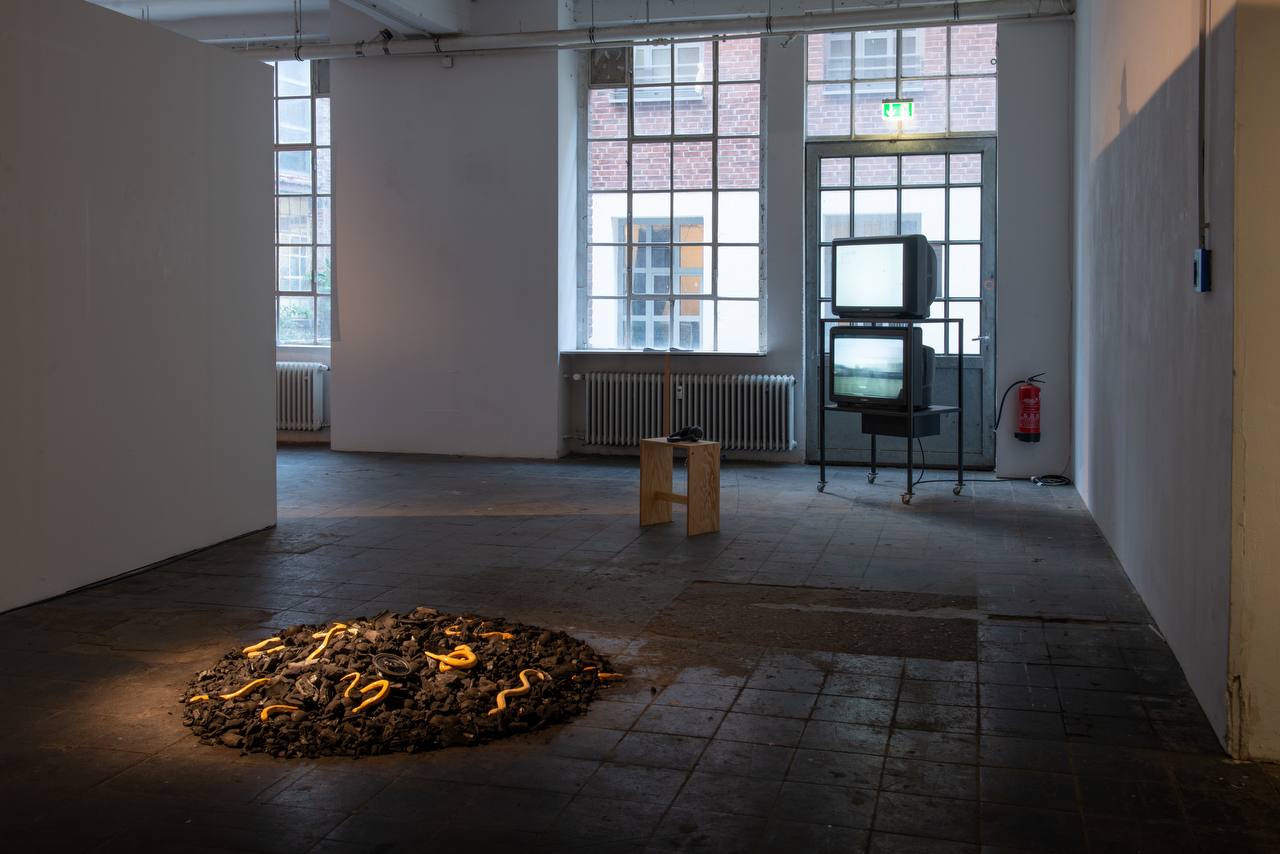 (Click on image for more...)
(Click on image for more...)
I especially began to pay attention to my grandmother's stories after my grandfather died. I was interested in her past, in how people organized and managed their life in the village, how they spent their youth, and what they were happy about.
My grandfather was a potter and almost every weekend he traveled to the town market to sell his products. He often exchanged them for whatever goods he needed. I remember how we took the train together back to the village and, for some reason, we were allowed not to pay the fare. I believe he knew all the ticket controllers and how to negotiate with them. My grandmother and I often recall how he once was mentioned in a Ukrainian newspaper for selling his pottery and not paying taxes. Just like that. Such a harmless offender.
Based on her and my memories, I analyze and reflect on rural living and imagine it as invisible tactics of resistance, a silent revolution — implicit but familiar forms of life organization and communication.
The already known attempts to change the status quo seem not to work any longer or are not possible to apply anymore.
The sound consists of the documentation of conversations and water as one of the main elements of agriculture, which, under certain circumstances, becomes a tool of violence and power.
By using clay as a means, I refer to the folk craft in the Belarusian part of Polesie, to the relationships and material and non-material exchanges that people have practiced among each other — what some call ‘alternative economies” nowadays.

“Brunch on Credit”
Group Show (photo documentation), Vilnius, January 2020
“You can take your time because we don’t know when you wake up...”
Group Show (photo documentation), Vilnius, January 2020
“You can take your time because we don’t know when you wake up...”
“Brunch on Credit” was an experimental project, which took place in my living place. I came up with this idea after discovering the local art scene in Vilnius. In this city many art spaces operate in different modes, with various approaches: from a traditional Contemporary Art Centre to more alternative spaces, such as an area where the kitchen is combined with a display space, as well as home galleries. Even if we take into account these alternative spaces and view them as public, there are still significantly traditional patterns in the distribution of space for the exhibited art pieces, as well as where oneself as a visitor is designated in relation to the art work in the given location. An obvious traditional pattern that some home galleries still use, is painting walls white.
I wanted to deconstruct the distribution of the dichotic categories public/private, visitor/guest, art pieces/everyday objects. The idea was to not create an exhibition, but rather an organic interaction between the art itself and its observers (guests could get involved in this process 24/7). There, not only art pieces could co-exist, interplay and diffuse with routine objects, but also an initial change in the way we experience everyday life could happen.
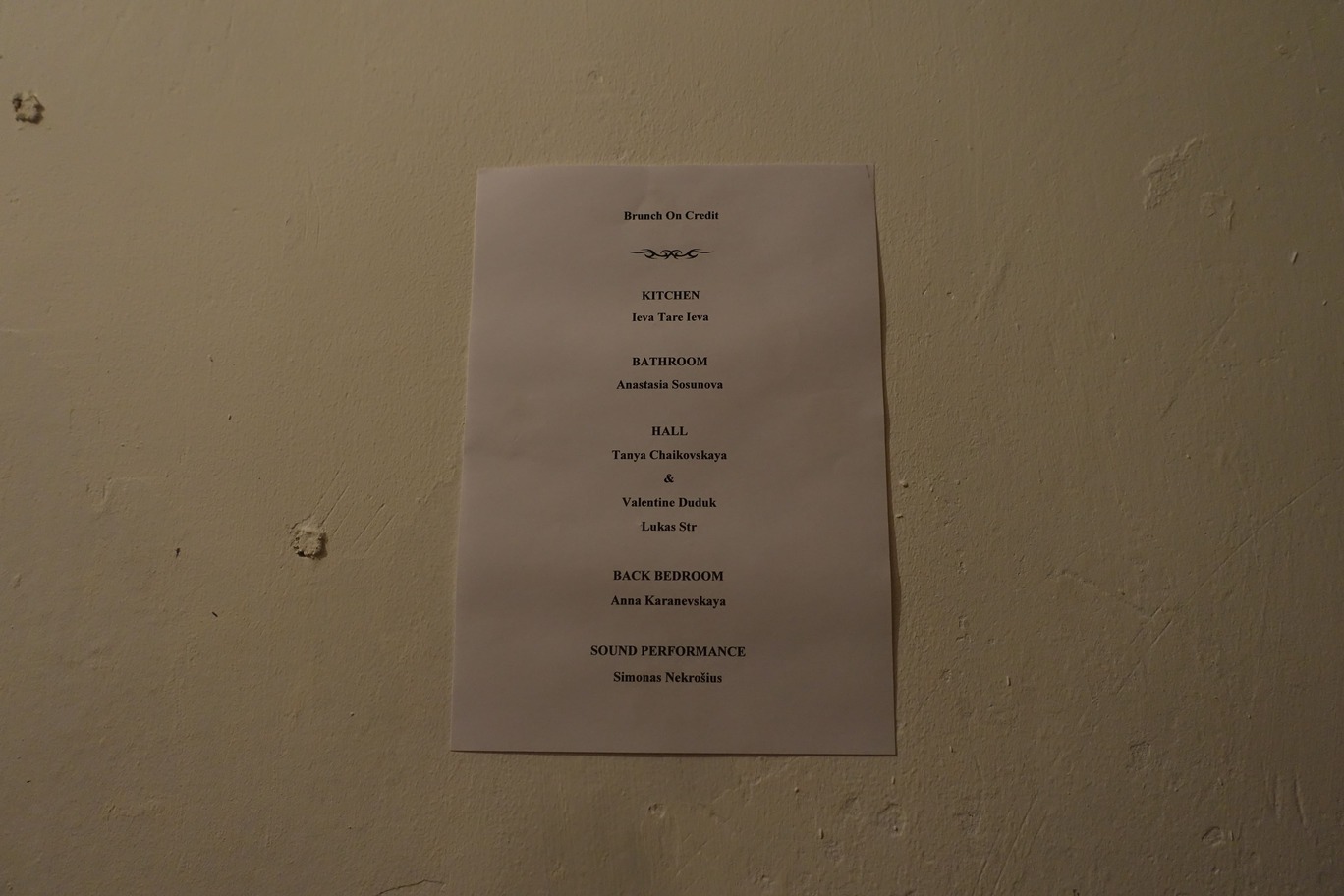 (Click on image for more...)
(Click on image for more...)
I wanted to deconstruct the distribution of the dichotic categories public/private, visitor/guest, art pieces/everyday objects. The idea was to not create an exhibition, but rather an organic interaction between the art itself and its observers (guests could get involved in this process 24/7). There, not only art pieces could co-exist, interplay and diffuse with routine objects, but also an initial change in the way we experience everyday life could happen.

Participants: Tanya Chaikovskaya & Valentin Duduk, Anna Karanevskaya, Simonas Nekrošius, Anastasia Sosunova, Lukas Str, Ieva Tare Ieva
“To whom it may concern”
Dear “to whom it may concern”,
It was a pleasure to meet you. I really enjoyed spending time with you. The first day we met was especially memorable. Thank you for showing me that beautiful view in that spectacular building. The wonderful view stimulated my desire to make more appropriate artworks. I would like to say that I appreciate your decision to give me some of your space, which is located in the highly valuable part of Düsseldorf. You probably thought that giving the opportunity to show one’s work in a real exhibition mode is a great and joyful feeling for you. It certainly explains the reason why you behave so generously and how the decision making was carried out, which sometimes did not take into account some participants’ opinions. Anyway, I feel so grateful to you for helping us out in the exhibition preparation process. The logic of your actions is understandable given how busy you are these days. Although we rarely had a chance to talk privately and get to know each other better, I must say I admire your personality. In the hustle and bustle of your many businesses you have always found the way to pretend that you care about the at-stake issue. Also, by taking over that action you could represent yourself being aware of that issue. That is why sometimes you allow yourself to invalidate our agreements. Nevertheless, I very much appreciate you support and for giving us all the time to find ourselves in such difficult circumstances.
P.S. I wish you a good time with your friends while enjoying the artworks on display. I will clean the entire space after this exhibition’s conclusion and I hope you will appreciate my hard work.
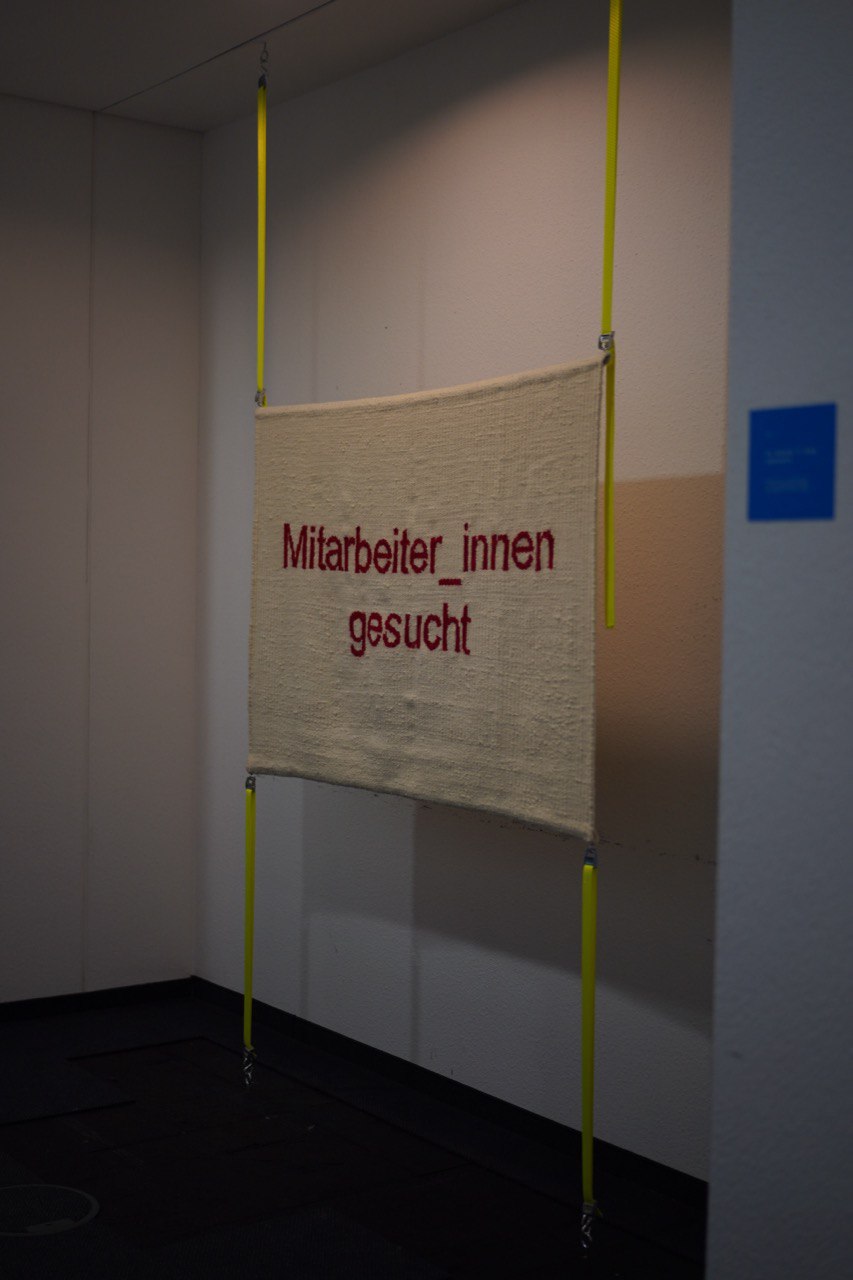 (Click on image for more...)
(Click on image for more...)

During her stay at the Gyumri AIR residency
Tania Licheuskaya worked together with the local community on handcrafting and stitching together a tablecloth for the space. At the end of her stay she organized a small market where people could exchange things between each other.
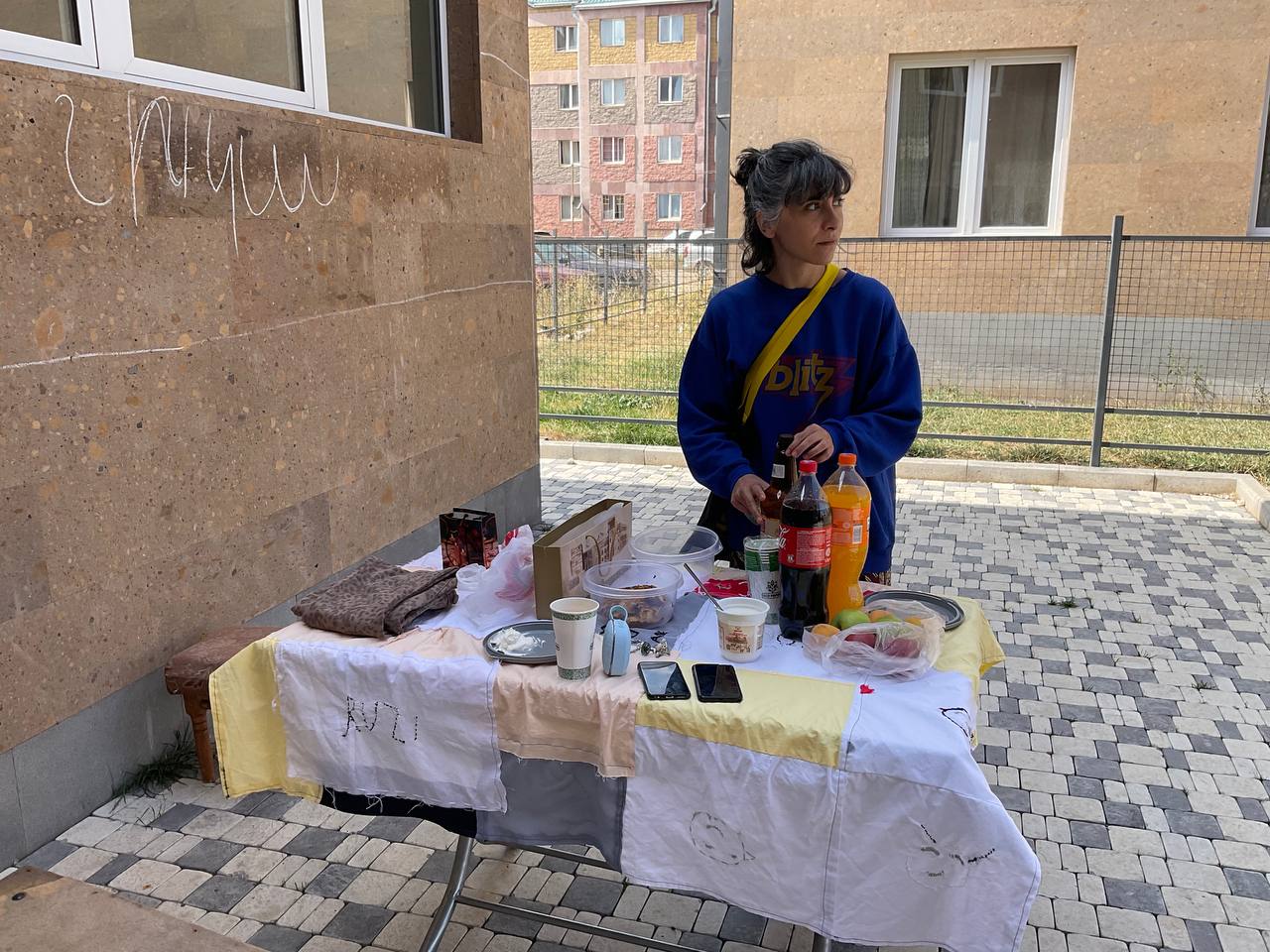 (Click on image for more...)
(Click on image for more...)
 (Click on image for more...)
(Click on image for more...)
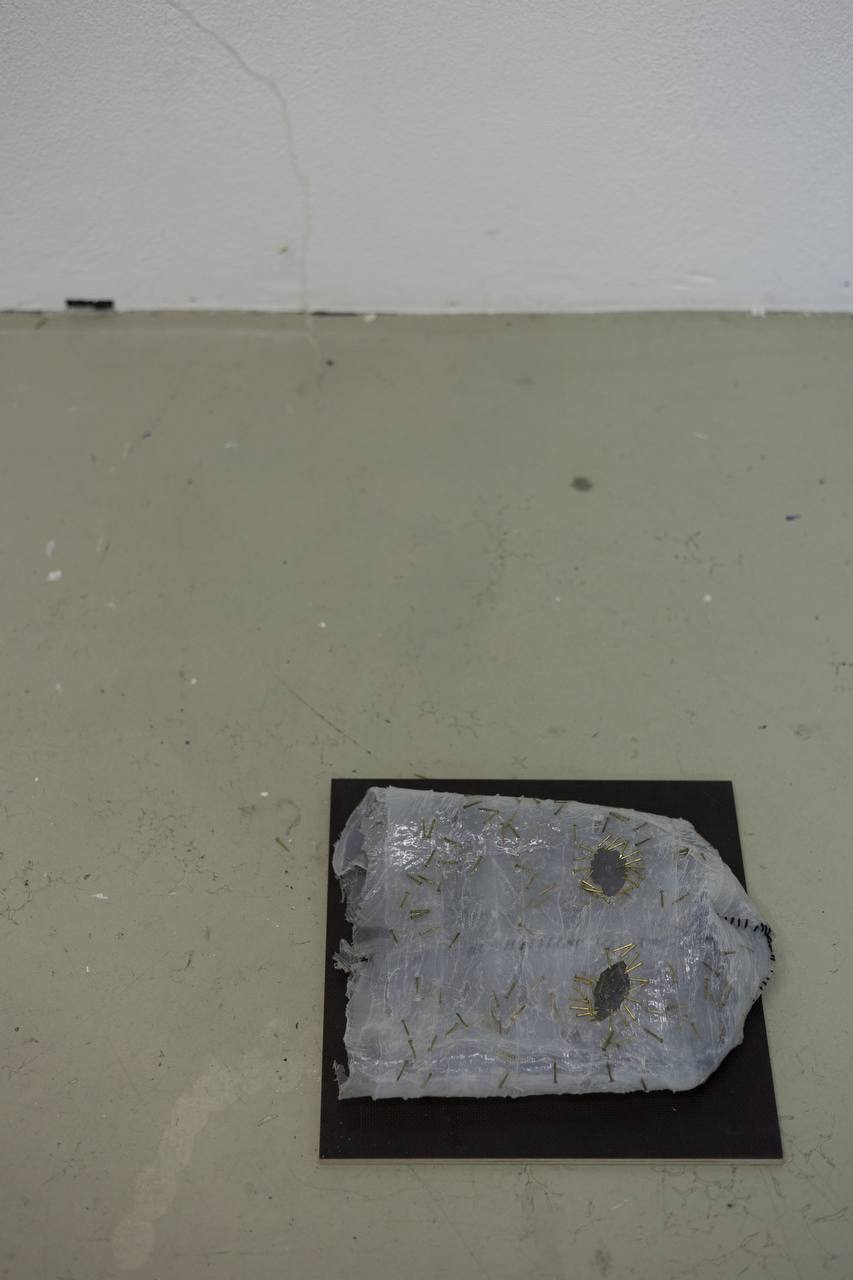 (Click on image for more...)
(Click on image for more...)
Tania Licheuskaya worked together with the local community on handcrafting and stitching together a tablecloth for the space. At the end of her stay she organized a small market where people could exchange things between each other.

While having her meetings and sewing evenings she would try to question the idea of hospitality and think of the ways people can understand each other, not only through common language but also by sharing their stories and preparing something together, be it food or a cloth for the table.
to hurtle

The work concerns the frenetic pace of everyday life and the lack of time to stop or slow down, the balance between what one wants and what one must do, the political implications of causes and consequences, the fatigue and repetitiveness of actions. It addresses migration, economics and art education. Here I try to understand how one as a migrant body and art student can experience different dimensions of being and socializing. I try bringing these two worlds together by emphasizing economic and class issues. This work is one of those attempts when I approach the topic without judgment and rather in a more ironic manner, which can also be read as a political statement.
Braveness
